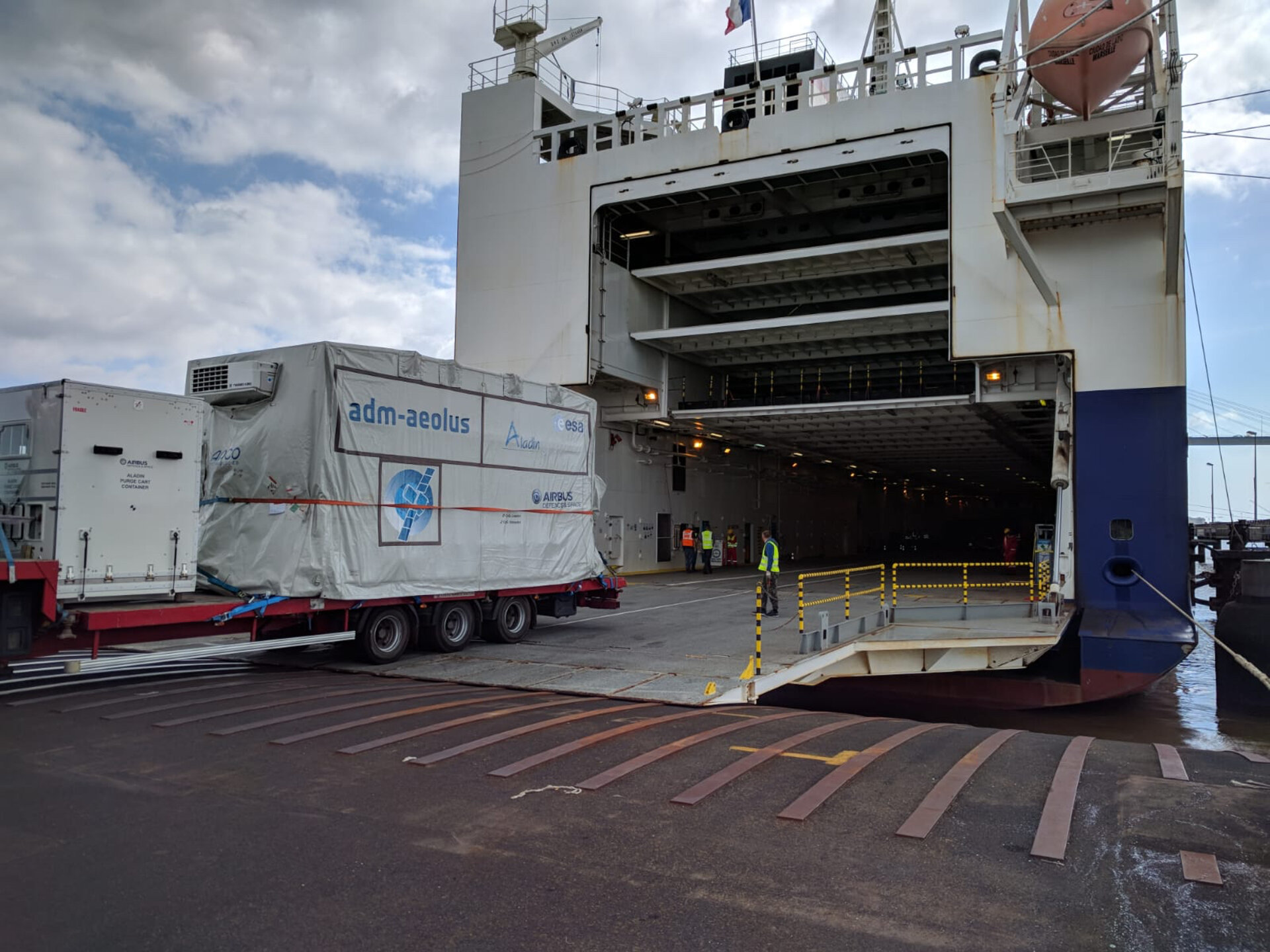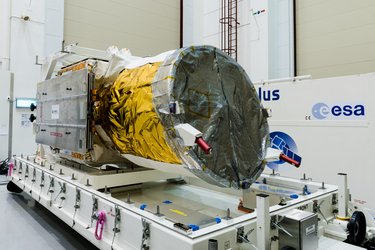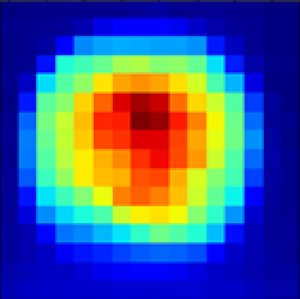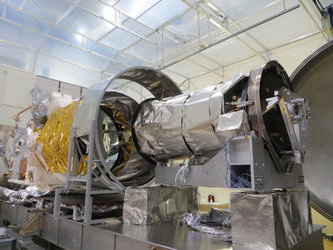Aeolus sets sail
Today is Global Wind Day, which couldn’t be more apt for ESA’s Aeolus wind satellite to begin its voyage to the launch site in French Guiana. And, while almost all satellites journey by aircraft, Aeolus is different, it’s going by ship.
Scheduled to liftoff on a Vega rocket on 21 August at 21:20 GMT (23:20 CEST) from Europe’s spaceport near Kourou, Aeolus carries one of the most sophisticated instruments ever to be put into orbit.
This pioneering mission uses powerful laser technology that probes the lowermost 30 km of our atmosphere to yield vertical profiles of the wind and information on aerosols and clouds.
Since the instrument is sensitive to pressure change, ESA and Airbus Defence and Space engineers decided that the safest way for it to journey from France, where it has been going through testing, to French Guiana would be by ship.

Denny Wernham, ESA’s Aeolus instrument expert, explains, “Going by ship may seem a little strange, after all it will take around 12 days to get there instead of a matter of hours, but if, for whatever reason, the aircraft had to descend rapidly and there was a sudden increase in air pressure, Aeolus’ instrument could be damaged.
“It was designed, of course, to allow for the pressure drop during launch ascent so that it could be taken into orbit, but not for a fast descent. So basically, once it’s up, it’s up.
“So, today we see our beloved satellite and all of its support equipment being loaded onto a ship in Saint Nazaire in western France and set forth across the Atlantic. And, indeed, it is kind of ironic: our high-tech wind satellite is travelling by a means that many years ago relied on the wind.”
Aeolus has, without doubt, been a challenging satellite mission to develop. Nevertheless, this long-awaited mission is now set to not only improve our understanding of how the atmosphere works and contribute to climate change research, but will also help to predict extreme events such as hurricanes. It will also help to better understand and model large-scale wind patterns driving weather such as El Niño.

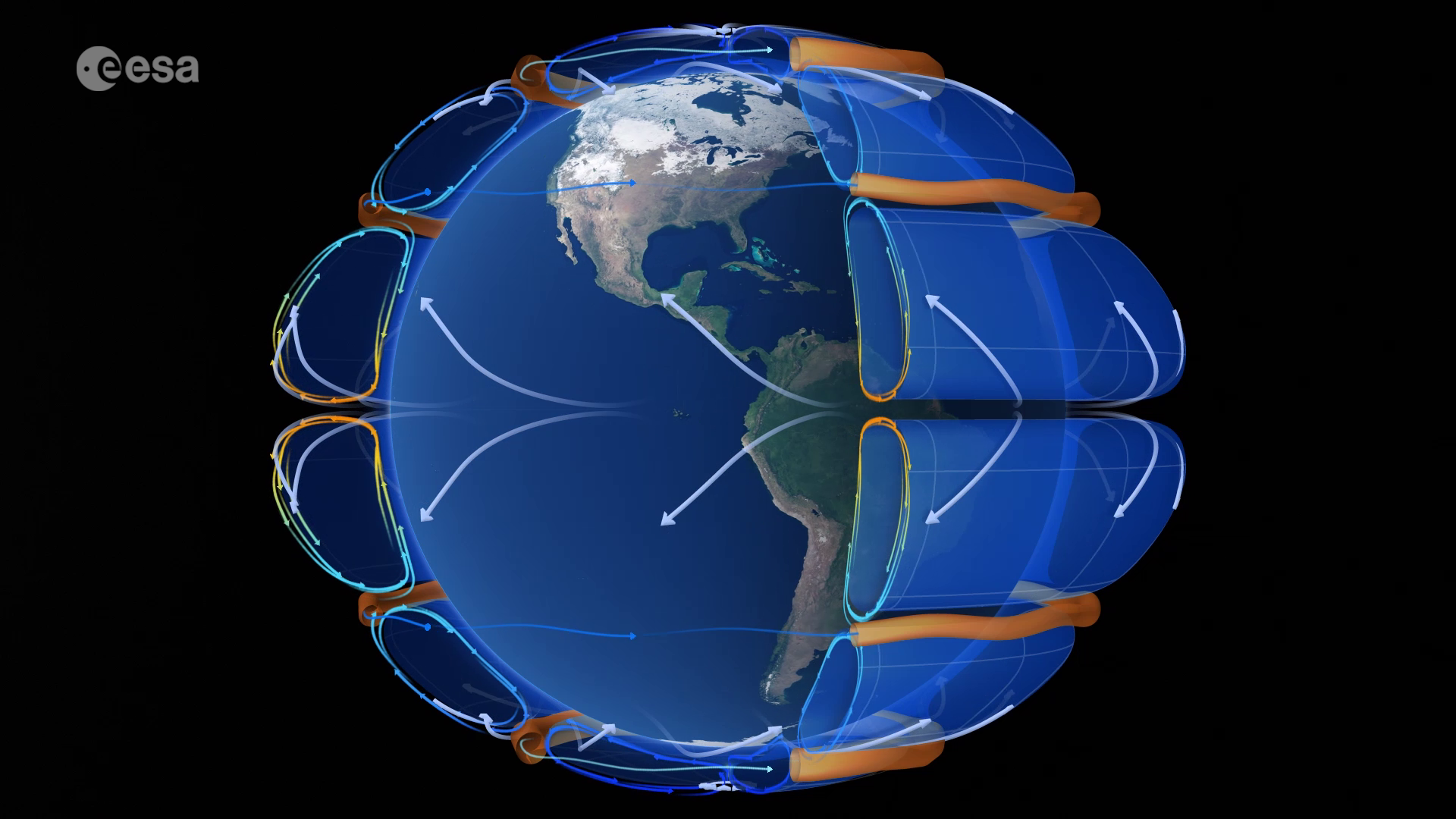
Access the video
While Aeolus is set to advance science, it will also bring considerable benefits to society by improving weather forecasts.
Aeolus measures the wind around the globe and delivers its measurements almost in real time, which is exactly what meteorological centres are waiting for to improve our forecasts.
ESA’s Aeolus project manager, Anders Elfving, said, “Today marks a very special day for us. After being such a long time in the making, Aeolus officially passed its ‘qualification review’ yesterday.
“This means its full steam ahead with what we call the launch campaign – essentially getting to the launch site and preparing the satellite for liftoff on 21 August.”
ESA’s Aeolus mission scientist, Anne Grete Straume, added, “I like the fact that our shipment date coincides with Global Wind Day. Aeolus will certainly advance science, but among its potential practical application areas is the wind energy industry.
“This industry needs to know how much energy they can produce at any one time – and for that they need accurate forecasts. We certainly hope that our mission will be able to help out there.”


